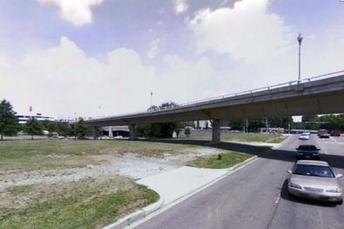Rejection is One Thing, but Rejection From a Fool is Cruel

Villains don't have to produce a weapon nor do they have to exhibit a behavior in the moment to meet the classification. All it takes is municipal henchmen to be on the wrong team, the wrong side of history, have a bad idea and then build it with tremendous and ruinous results.

It was suits with skinny ties, horn-rimmed glasses, martini lunches and cigs at the Occidental Restaurant who, all the while, were hatching and funding a master plan that would assault the Federal City in two blows. The first would be to remove any indication that Washington was built before 1955, and the second, to run a highway through three different locations: Georgetown, Connecticut Avenue and 3rd Street.
Let’s not be so forgiving of these passive-aggressive assassins who, from a casual glance look to be men and women just doing their jobs. I am not speaking of the fellow who drove the bulldozer, it’s the guy who commissioned the new map and set the demolition date and then hailed it as a victory of the civilized world.
These are the Robespierres of our architectural culture; seemingly righteous towards others in their pursuit of the common good. We accept them as being progressive and even inspirational, yet not even with 20/20 hindsight does this look like a good idea at the time because, simply it wasn't.

We were drunk on the prospects of a post-war future and hung-over in our revulsion of an America that had a stagnant and dilapidated European architectural sensibility.
We pay a visit to a little strip of land just south of K Street at 27th Street, or just north of the Watergate. It looks as if some thoughtful group designated it as a 'greenway' or open space. It is an architectural and historical graveyard that had the living daylights knocked out of it by the same purveyors of destruction that we just met at the Occidental.

The view today shows a strip of green that used to be a line of 18th and 19th century buildings. The Whitehurst Freeway ramp clumsily blows through this expensive and not thought out no-mans land. The ramp and the freeway are being considered for removal.

This was an area that would be a feeder to the larger artery of Interstates that would have turned M Street into the likes of what we know today as I-395 in Southwest. What occupied this dense 17-block area were houses, light industry, groceries stores, a school and regular self-sustaining western civilization stuff like that. The important thing to keep in mind is that it was old, like sewing stripes and stars on our flag, old.

Units of the British Army stopped short of Georgetown here while chasing the Americans after Bladensburg. Actually, they were nervous about moving into Georgetown and didn't because the M Street Bridge was the only way in or out and we were developing a talent for dynamiting parts of our city while they were still visiting.
Very early American houses and buildings survived up to the 1950s. Foggy Bottom-West End was not that dense in 1814-1865 because of the low-lying flooding problem, so the higher ground was occupied as seen in the map.
Visit The Ruined Capitol for more.





